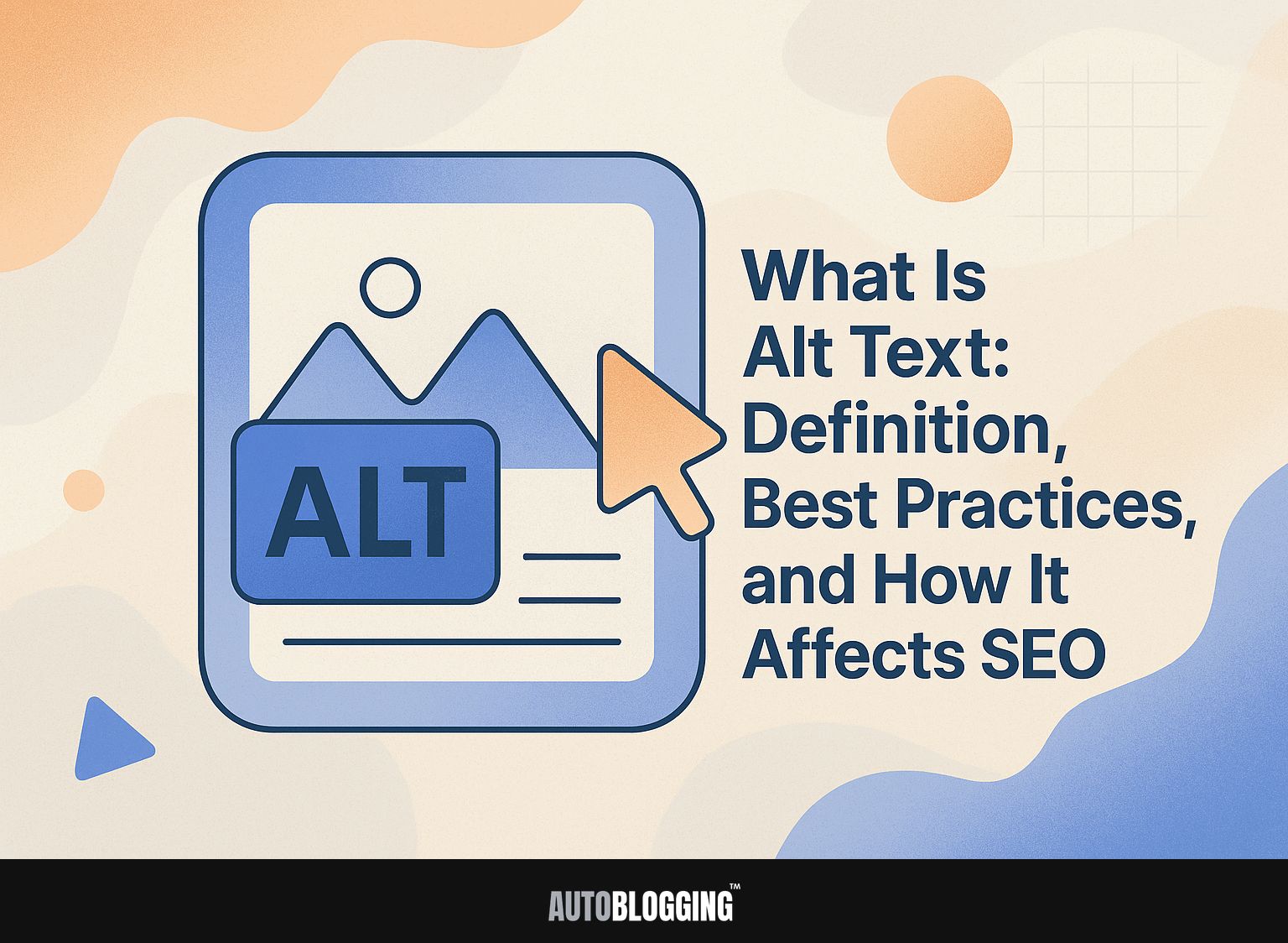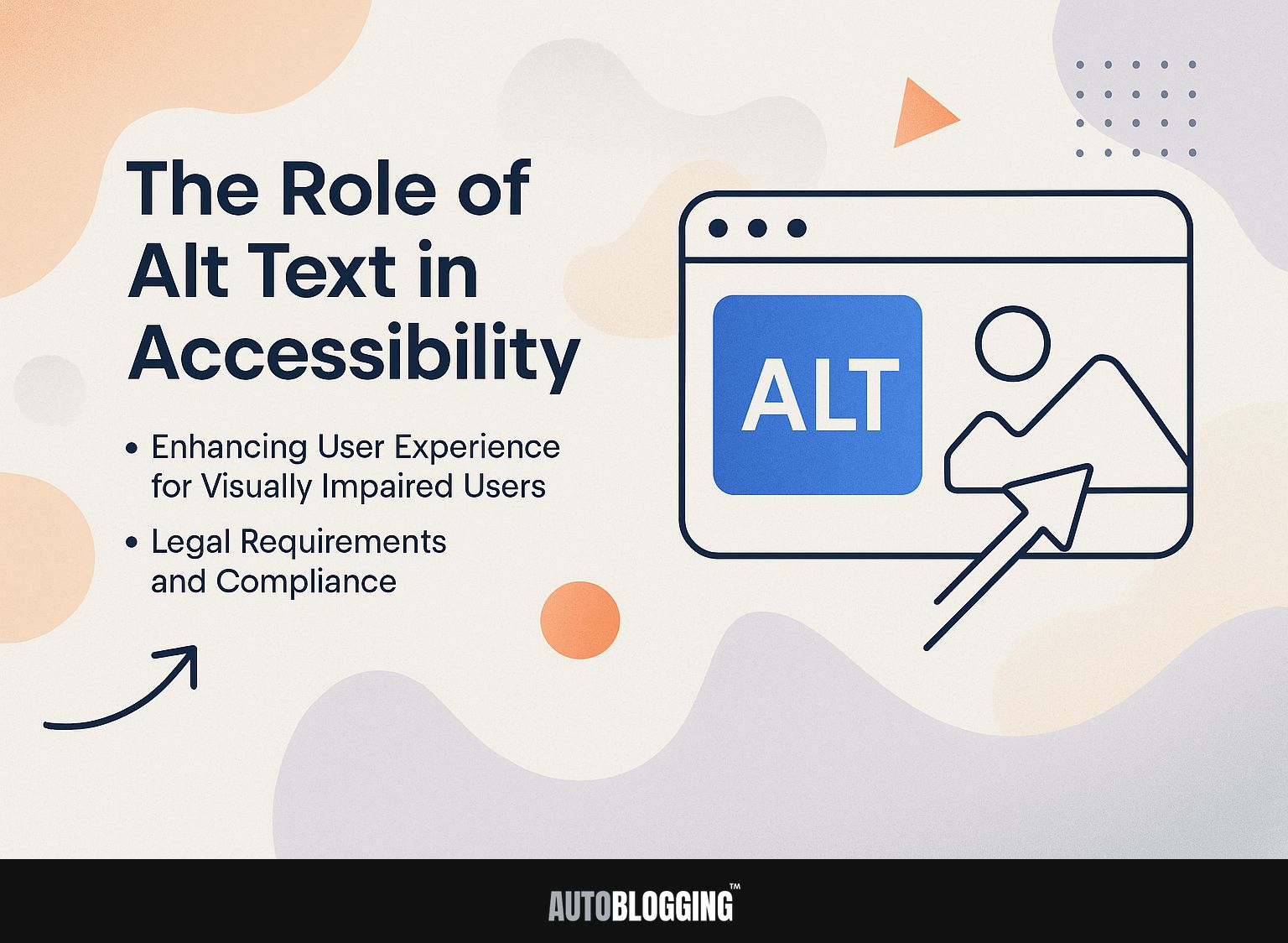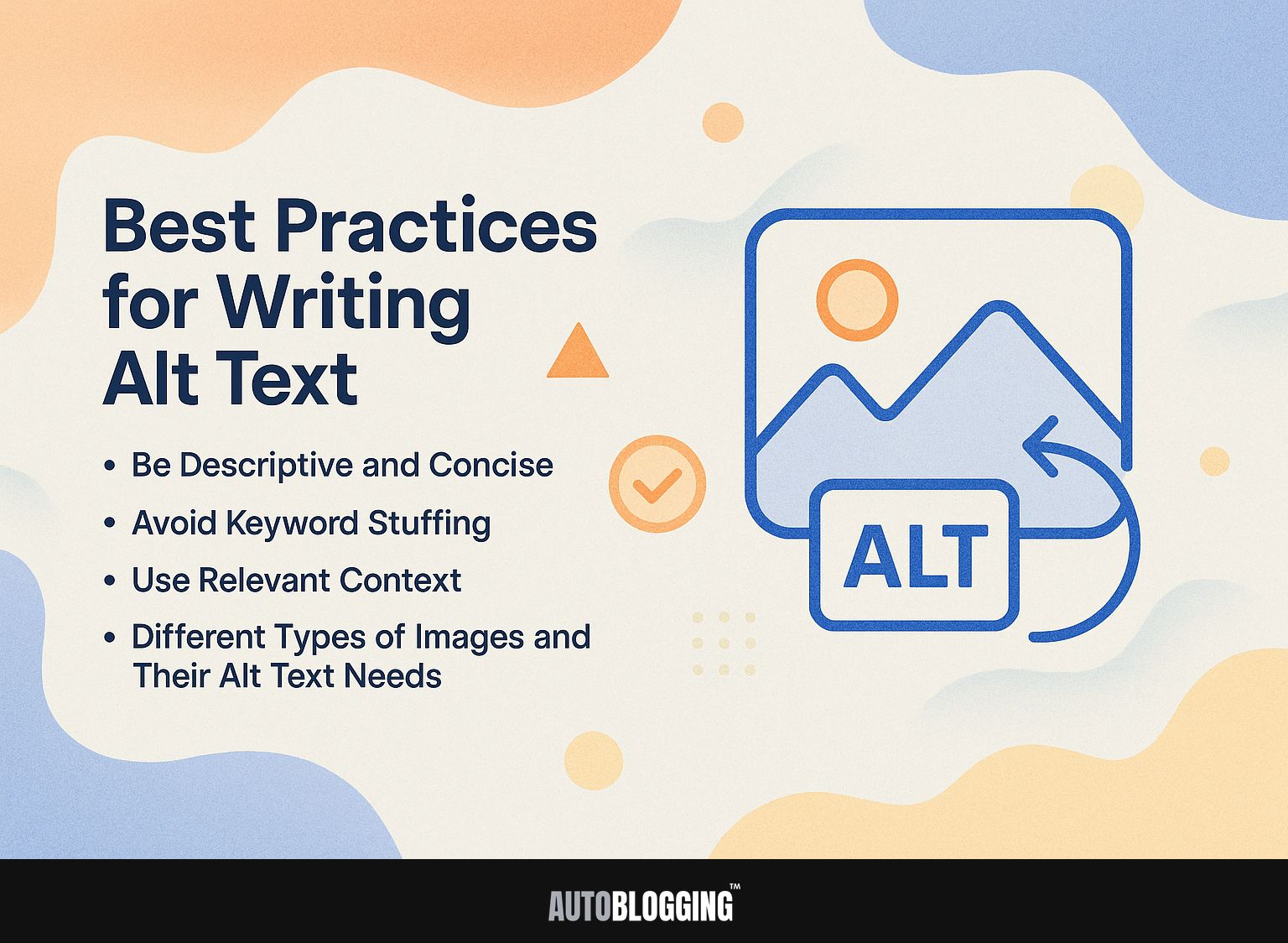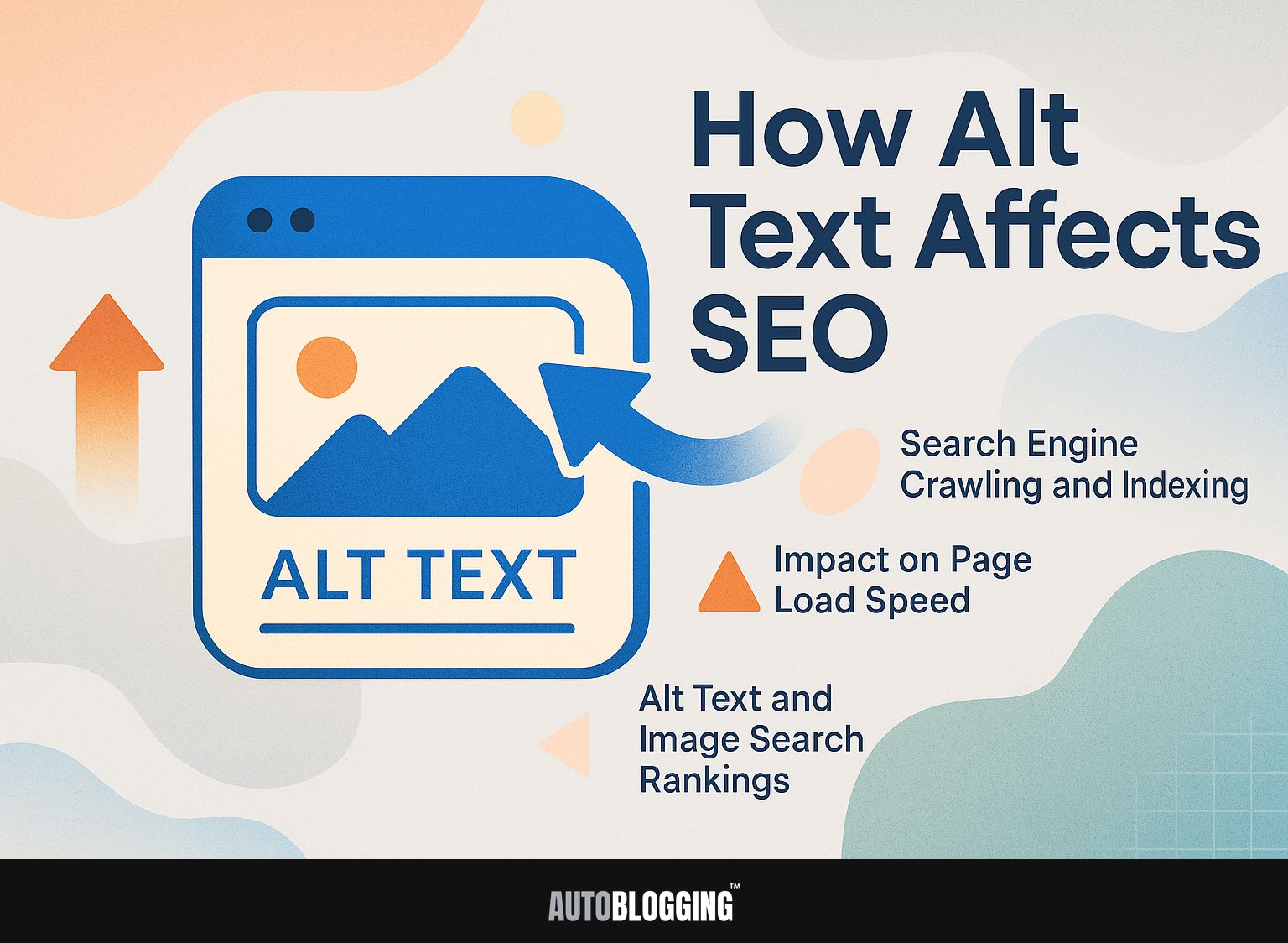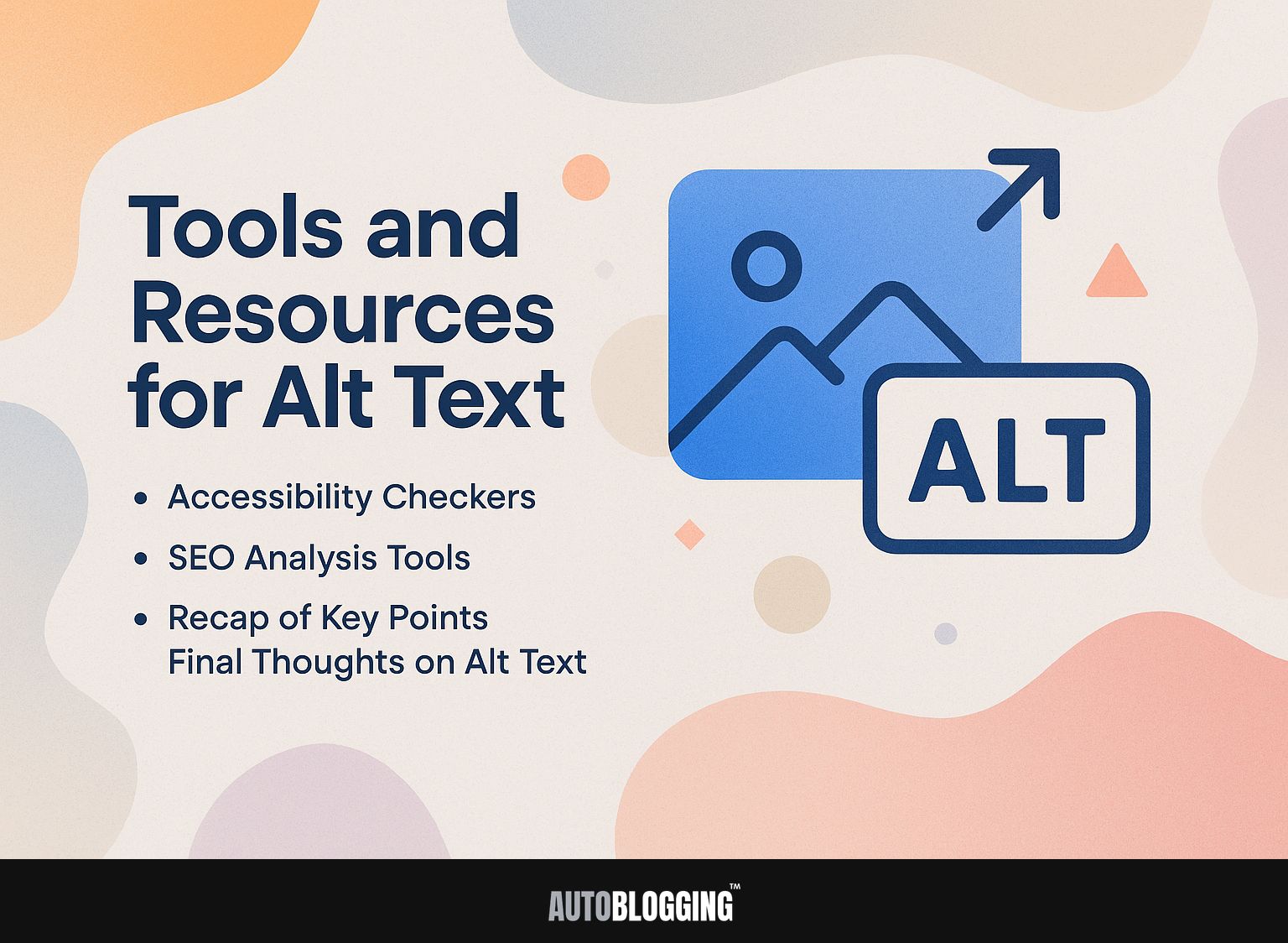Alt text is important for web content because it improves accessibility and helps with SEO. By providing descriptive text for images, it significantly improves user experience, especially for visually impaired users. This article covers what alt text is, tips for creating it, and how it affects search engine rankings. Knowing these parts will help you make web content that works well and connects with everyone.
Key Takeaways:
- Alt text, short for alternative text, is a written description of an image on a webpage that helps visually impaired users understand its content.
- Alt text is essential for accessibility compliance and creating a positive user experience for visually impaired users.
- Writing descriptive, relevant, and concise alt text can also improve a webpage’s SEO by helping search engines understand the context of images.
Contents
- The Role of Alt Text in Accessibility
- Best Practices for Writing Alt Text
- How Alt Text Affects SEO
- Common Mistakes to Avoid
- Tools and Resources for Alt Text
- Frequently Asked Questions
- 1. What is Alt Text and why is it important for SEO?
- 2. What is the best practice for writing Alt Text?
- 3. How does Alt Text affect SEO?
- 4. What happens if I do not include Alt Text on my images?
- 5. Can Alt Text be added to all types of images?
- 6. Are there any tools or resources to help with writing Alt Text?
1. Definition of Alt Text
Alt text is a textual description added to an HTML image tag, defined by the ‘alt’ attribute, that conveys the content of the image to users and search engines. Adding descriptive alt text is important for accessibility and helps with SEO.
For instance, if your image shows a dog in a park, the alt text should be “Golden Retriever playing with a ball on a sunny day in the park.” This helps visually impaired users grasp the image’s content and also makes it relevant for search engines.
Remember to keep it concise but informative, aiming for around 125 characters. You can implement it in your HTML code like this:
<img alt="Golden Retriever having fun with a ball in a sunny park" src="dog.jpg"/>
Correct alt text helps users and can make your site easier to find in searches.
2. Importance of Alt Text
Using good alt text helps people access content and makes a website more visible in Google Images and search results.
Alt text provides a description for images, important for users with vision impairments and required by the Americans with Disabilities Act (ADA). Research shows that more than 20% of Americans have disabilities, so following the rules is both morally right and legally required. To write effective alt text, describe the image content clearly and briefly.
For example, instead of just saying ‘dog,’ you could say ‘a golden retriever playing fetch in a park.’ This way, you help search engines find your content more easily with specific keywords and make it easier for everyone to access, creating a web experience that includes more people.
The Role of Alt Text in Accessibility
Alt text helps people who are visually impaired use the internet and follows accessibility guidelines like WCAG. This is not only crucial for inclusivity but also plays a significant role in SEO strategies, as it impacts how search engines interpret images. For further insights on its influence, consider exploring our deep dive into alt tags and Exif data.
1. Enhancing User Experience for Visually Impaired Users
Well-written alt text greatly improves browsing for users with visual impairments by giving descriptions of images that screen readers can read.
To create effective alt text, be specific and descriptive, focusing on the image’s function and content. For instance, rather than just saying “A dog,” say “A golden retriever running after a ball in a park.” This clearer description helps people grasp the idea more easily.
Use tools like WAVE to evaluate your alt text’s effectiveness; it provides feedback on accessibility errors and suggests improvements. Following the Web Content Accessibility Guidelines (WCAG) improves your plan by complying with legal requirements and making it easier for everyone to use.
2. Legal Requirements and Compliance
Following the law for alt text is important, because not doing so can result in fines under laws like the ADA and WCAG rules.
In 2019, a well-known online retailer was sued because of missing alt text. This led to a large settlement, showing how important it is to follow the rules.
To make sure your website complies with alt text rules, begin by checking your images for any missing descriptions. Use tools like Screaming Frog or Siteimprove to identify issues.
Next, implement a standardized process for adding alt text during content creation; remember, it should be concise and descriptive.
Regularly review your website to maintain compliance and protect your business from potential legal challenges.
Best Practices for Writing Alt Text
Writing clear alt text can improve accessibility and SEO results, allowing content to reach a wider audience. Additionally, understanding on-page SEO techniques can further enhance content visibility in search engines.
1. Be Descriptive and Concise
Good alt text should be brief and clear, typically using 5-15 words, and should correctly describe what is in the image. To write useful alt text, make it clear and relevant.
For instance, rather than saying ‘dog in a park,’ say ‘golden retriever chasing a ball in a bright park.’ This adds more detail. Avoid vague phrases like ‘image of’ or ‘this shows.’ Instead, directly describe the content. Consider the image’s purpose-if it’s for a product, include details like color and size.
Balance detail with brevity; aim for essential information without overwhelming text. Using these methods makes your website easier to use and better for visitors.
2. Avoid Keyword Stuffing
Using too many keywords in alt text can hurt your SEO and make it harder for users to understand. It’s important to prioritize clarity.
Write clear descriptions in your alt text to explain what the image shows, rather than just filling it with keywords. If the image shows a golden retriever catching a ball, write “Golden retriever playing fetch in a park” instead of simply listing “golden retriever, dog, fetch, park.”
Think about including suitable keywords naturally so users can easily grasp the content without it seeming unnatural. Tools like Yoast SEO can help you balance keyword usage and readability, ensuring your alt text remains beneficial for both search engines and users.
3. Use Relevant Context
Having context in alt text is important because it helps users know why the image matters to the content or webpage. For effective alt text, describe the image while linking it to the page’s theme.
For example, if you have a photo of a lively farmers’ market for an article on local food trends, use alt text like “Busy farmers’ market with fresh produce, showing the increase in local food sourcing.” This method makes things easier to access and helps with search engine optimization.
Tools like Photopea can help change images, letting you create visuals that fit your content story. By prioritizing relevance, your alt text becomes a key element of your user engagement strategy.
4. Different Types of Images and Their Alt Text Needs
Different kinds of images-like decorative, informative, and functional-need specific alt text to properly serve their unique roles.
For decorative images, such as background patterns, alt text should be left empty (alt=””), allowing screen readers to skip them. In contrast, informative images, like charts or infographics, necessitate detailed descriptions explaining the content and context-this could include the data trends or key findings.
Functional images, such as buttons or icons, should have concise alt text that describes their action, like “Submit” for a button. This approach helps people use your content effectively.
How Alt Text Affects SEO
Alt text plays a big role in SEO by helping images appear more often and rank higher in search engines, especially Google Images. Related insight: How Alt Tags and Exif Data helps with SEO
1. Search Engine Crawling and Indexing
Search engines use alt text as a key factor in crawling and indexing images, which directly influences a webpage’s visibility in search results. When using alt text, emphasize descriptive and relevant phrases.
For example, instead of using `image123.jpg,’ you might write, `Fresh organic apples in a basket on a wooden table.’m This helps people with vision impairments and makes it easier for search engines to list the content.
Tools like Yoast SEO can help analyze your alt text quality, ensuring that it contains keywords without being overly stuffed. Using well-written alt text consistently in your content can help improve rankings and increase click-through rates in image search results.
2. Impact on Page Load Speed
Alt text alone does not change how fast a page loads, but well-prepared images with alt tags can improve how the site runs and feels for users.
When images are properly sized and compressed, their smaller file size leads to much faster loading times.
Tools like TinyPNG or ImageOptim effectively compress images without sacrificing quality. Google PageSpeed Insights can find images that should be improved.
Adding descriptive alt text improves accessibility and helps search engines index images more effectively. This can lead to faster load times as clearer images contribute to web pages that perform better.
3. Alt Text and Image Search Rankings
Images with well-written alt text are more likely to appear higher in Google Images, which can help bring more visitors to your website.
For example, websites like Wikipedia and Airbnb use descriptive alt text effectively, resulting in significant visibility in image search results.
Wikipedia often includes alternative text with its entries that clearly explains detailed images, helping with search engine optimization. Airbnb improves descriptions for property images by mentioning details such as location and features. This approach has been shown to increase user interaction.
To do this, make sure your alt text is short but clear, ideally under 125 characters, and includes relevant keywords that fit your SEO plan.
Common Mistakes to Avoid
Recognizing common mistakes in writing alt text is necessary for improving SEO and accessibility. This emphasis on proper alt text utilization directly correlates with SEO strategies, as mentioned in our comprehensive guide on how alt tags and EXIF data help with SEO.
1. Writing Generic Alt Text
Generic alt text like ‘image’ or ‘photo’ fails to convey any meaningful information, diminishing user experience and SEO value.
Adding specific descriptions to images improves website usability for all users and benefits search engine results. For instance, instead of using the word ‘dog,’ describe it as ‘Golden Retriever playing fetch in a sunny park.’ This provides more details for people who can’t see the pictures and helps search engines sort your pictures accurately.
To write good alt text, keep these tips in mind:
- Use clear, descriptive language;
- Include relevant keywords;
- Keep it concise but informative, ideally under 125 characters.
Keep in mind that good alt text should clearly describe the image, improving both how users interact with it and how search engines rank it.
2. Failing to Use Alt Text for Decorative Images
Not using alt text for decorative images can confuse screen readers, leading to a frustrating experience for visually impaired users.
To improve accessibility, use empty alt attributes (alt=””) for images that are only decorative, such as backgrounds or spacers. This method allows screen readers to skip these parts, making it simpler to move through the content.
On the other hand, use detailed alt text for important images, like photos or infographics, to tell what the image shows-such as “Several students from different backgrounds working together in a library.” This helps users understand the main information without extra distractions.
Regularly audit your website content to verify correct usage, striking a balance between design and accessibility.
3. Ignoring Image Context
Ignoring the context of an image can lead to alt text that misrepresents its purpose, which can mislead and confuse users.
For instance, consider an image of a dog wearing a hat at a birthday party. An appropriate alt text for this situation could be, “A golden retriever in a party hat at a birthday party,” which gives clear and helpful details for people using screen readers.
In contrast, a vague description like, “A dog with a hat,” fails to convey the thematic essence of the image. By examining the image’s role in the content, you can make the alt text more helpful, which makes the content easier to understand and improves accessibility and user experience.
Tools and Resources for Alt Text
Using the right tools can make it easier to write good alt text and meet accessibility rules. Image optimization significantly impacts page load speed (our guide to image optimization explores advanced techniques).
1. Accessibility Checkers
Accessibility checkers like WAVE help identify alt text issues and provide suggestions for improvement, ensuring compliance with standards.
Using WAVE, you can spot specific alt text problems, such as missing or redundant descriptions. For example, when checking a page, WAVE might point out that an image lacks alt text, suggesting you add a description such as “A woman cycling in a park” instead of a vague term like “image.”
Tools such as AXE and Lighthouse can be used for thorough checks, showing information about alt text use and how it fits with accessibility rules. Regular checks with these tools can greatly improve how users experience your website.
2. SEO Analysis Tools
SEO analysis tools like Ahrefs and SEMrush can track how alt text affects image search rankings and overall site SEO performance.
To evaluate the effectiveness of alt text with Ahrefs, start by visiting the Site Explorer tool. Enter your domain and select the `Images’ section to view all indexed images.
Analyze the alt text for each image; missing or generic descriptions could hinder SEO. Use the `Content Gap’ feature to identify keywords your images should target.
Check the `Organic Keywords’ report to see how these images perform in search results. Prioritize adjusting alt text for images that rank poorly but appear relevant to your content.
3. Recap of Key Points
In summary, good alt text should clearly describe the image, match the surrounding content, and follow accessibility rules to improve user experience and search results.
To create alt text that truly serves its purpose, follow these steps:
- First, describe the content of the image succinctly but thoroughly. For instance, instead of saying “dog,” say “golden retriever chasing a ball in a park.”
- Next, make sure it fits with the topic-if it’s for a blog about pet care, connect it to topics like training or health.
- You can use tools like WebAIM’s WAVE or the Axe accessibility checker to evaluate the effectiveness of your alt text, ensuring it meets accessibility guidelines.
4. Final Thoughts on Alt Text
Writing clear alt text can make users happier and improve SEO. First, make sure your alt text clearly describes the image in 5-15 words. Focus on including relevant keywords for SEO without keyword stuffing.
For example, instead of saying “image of a dog,” describe it as “a happy golden retriever playing in the park.” Tools such as the WAVE accessibility tool can evaluate the quality of your alt text.
Regularly audit your existing images, updating any vague descriptions to improve clarity. Following these practices can improve website accessibility and search engine rankings, greatly helping your online presence.
Frequently Asked Questions
1. What is Alt Text and why is it important for SEO?
Alt text, short for alternative text, is a description of an image that is displayed in place of the image when it cannot be loaded. It is important for SEO because search engines use alt text to understand and index images, helping improve the overall visibility of a website in search results.
2. What is the best practice for writing Alt Text?
The best practice for writing alt text is to be descriptive, specific, and concise. The text should clearly explain what the image is and why it exists, using relevant words that are easy for everyone to understand.
3. How does Alt Text affect SEO?
Alt text affects SEO in several ways. It improves accessibility for visually impaired users, increases website credibility and engagement, and gives search engines more information to better interpret the content of a webpage and rank it higher in relevant search results.
4. What happens if I do not include Alt Text on my images?
If you do not include alt text on your images, it can negatively impact your website’s accessibility and SEO. Visually impaired users will not be able to understand the content of the images, and search engines may not be able to properly index and rank your website in relevant search results.
5. Can Alt Text be added to all types of images?
Yes, alt text can be added to all types of images, including graphics, logos, infographics, and charts, in addition to photographs. Adding alt text to all images on your website helps everyone access the content and improves search engine results.
6. Are there any tools or resources to help with writing Alt Text?
Yes, there are different tools and resources available to help with writing alt text, like SEO plugins, services for making alt text better, and online alt text creators. It is also recommended to follow the Web Content Accessibility Guidelines (WCAG) when writing alt text for maximum accessibility and SEO benefits.



